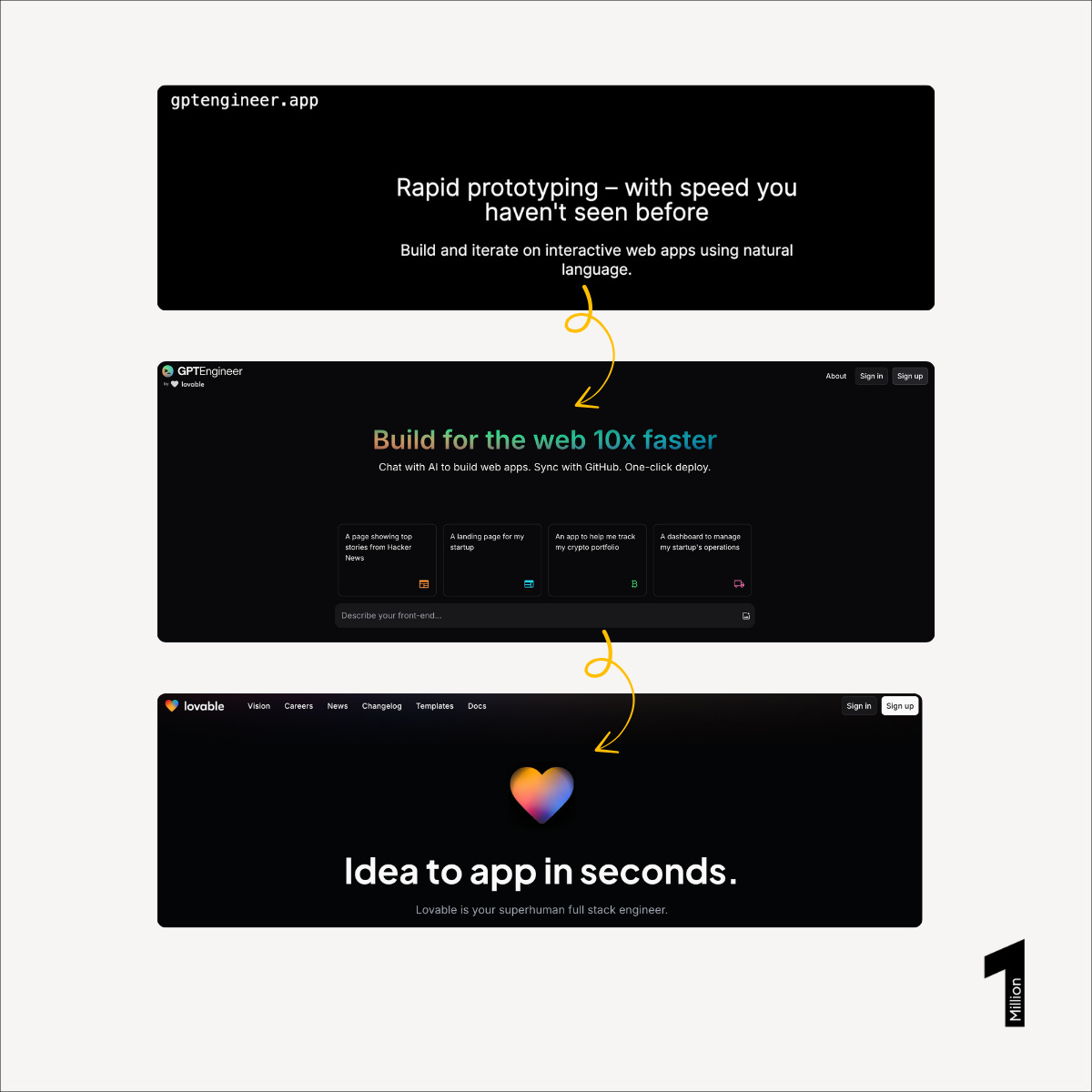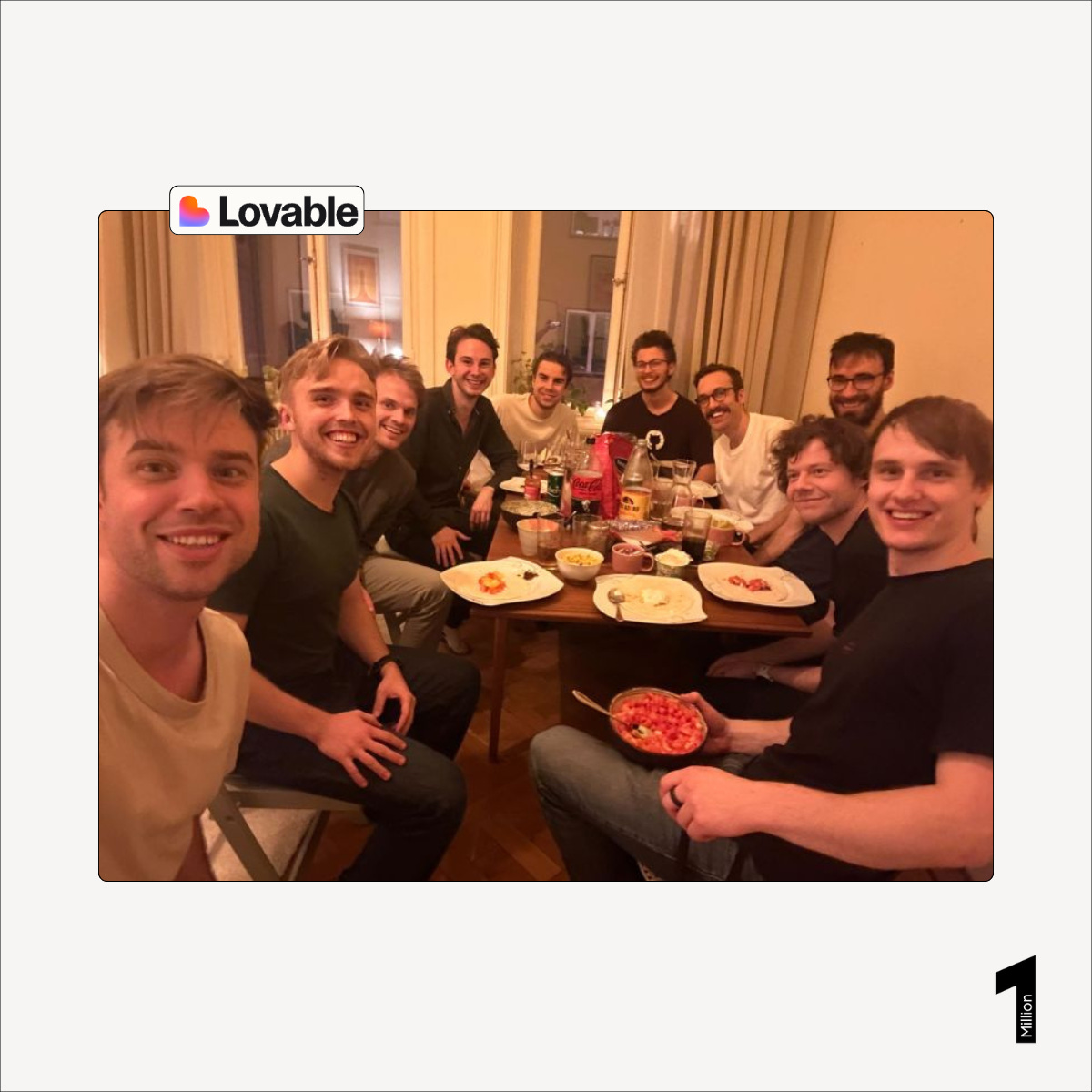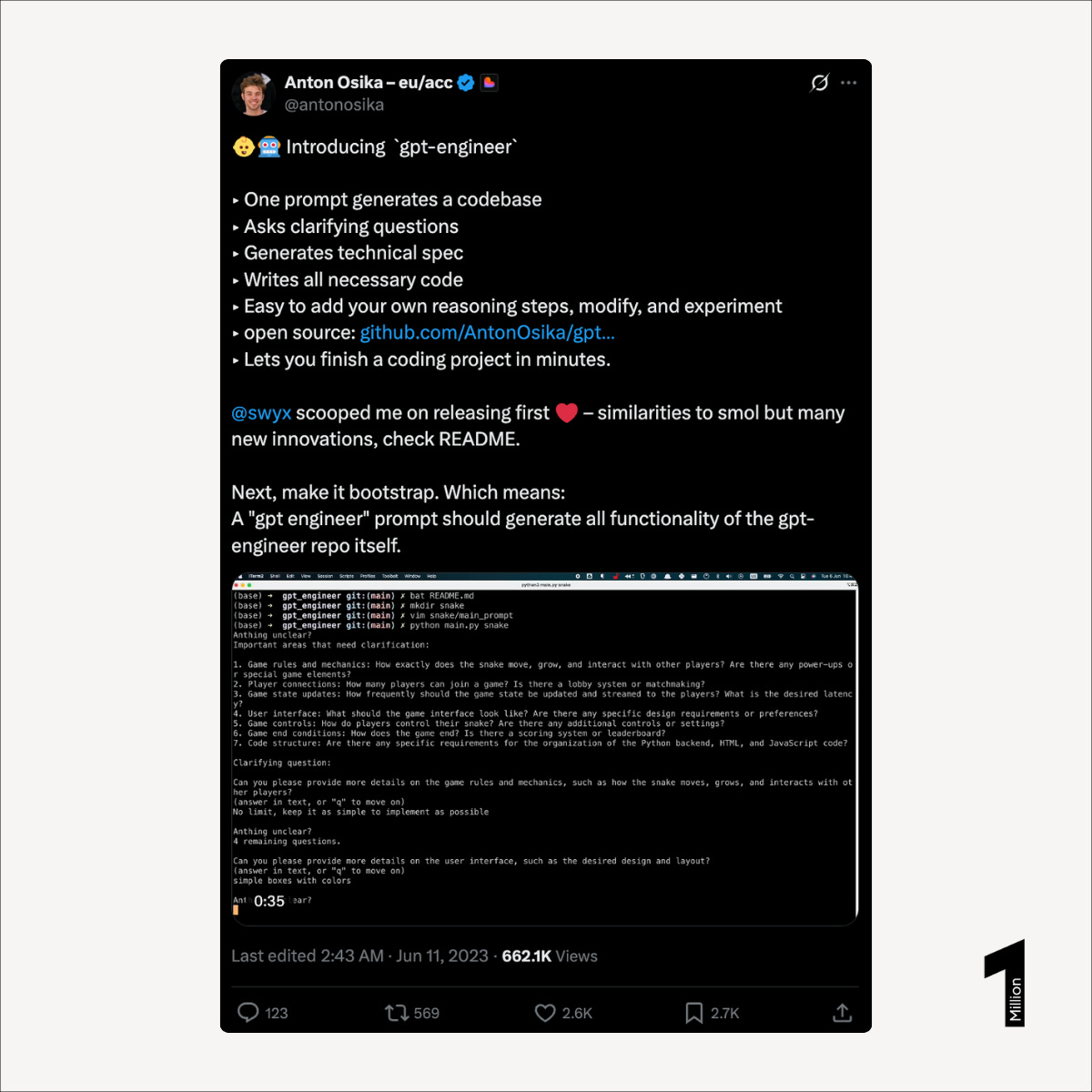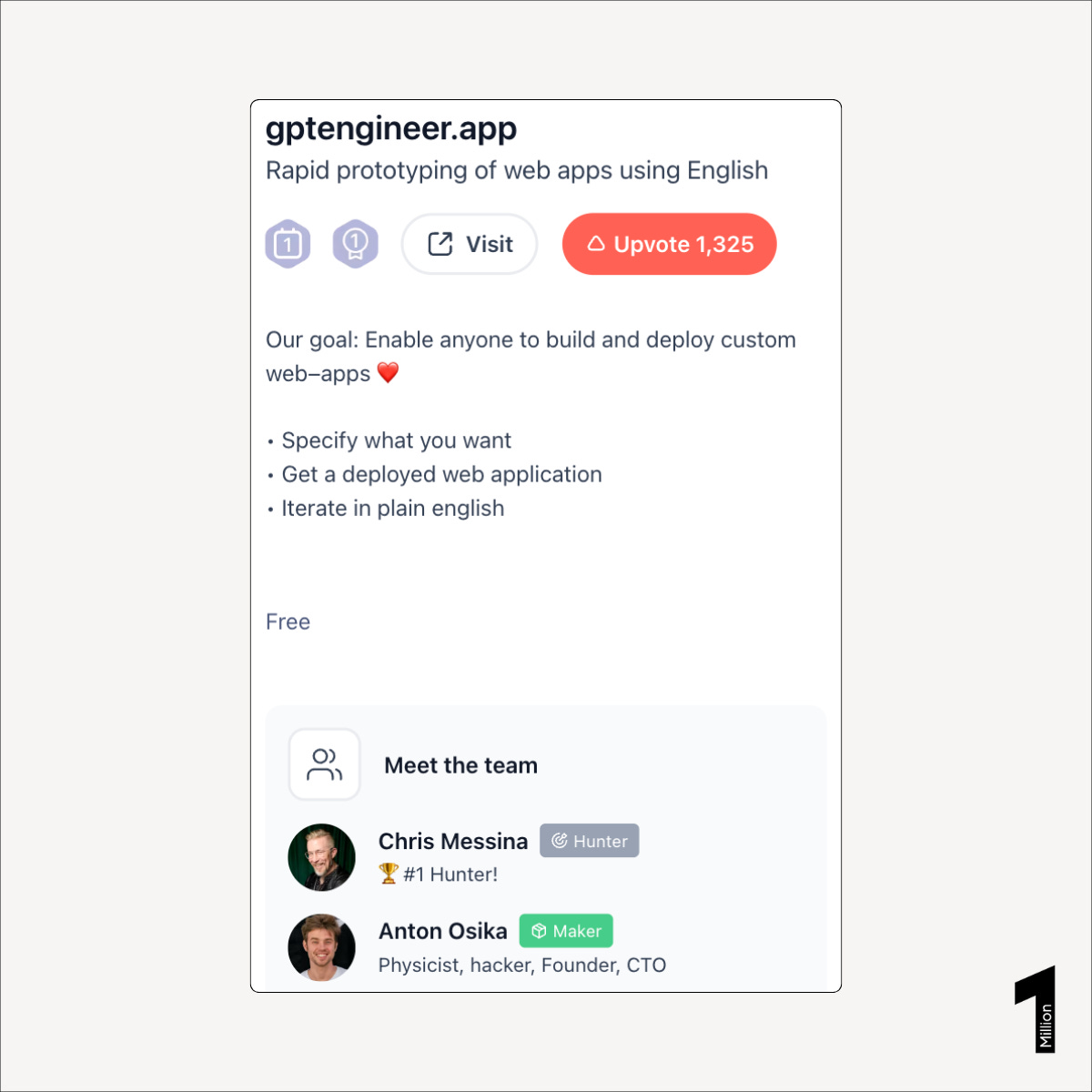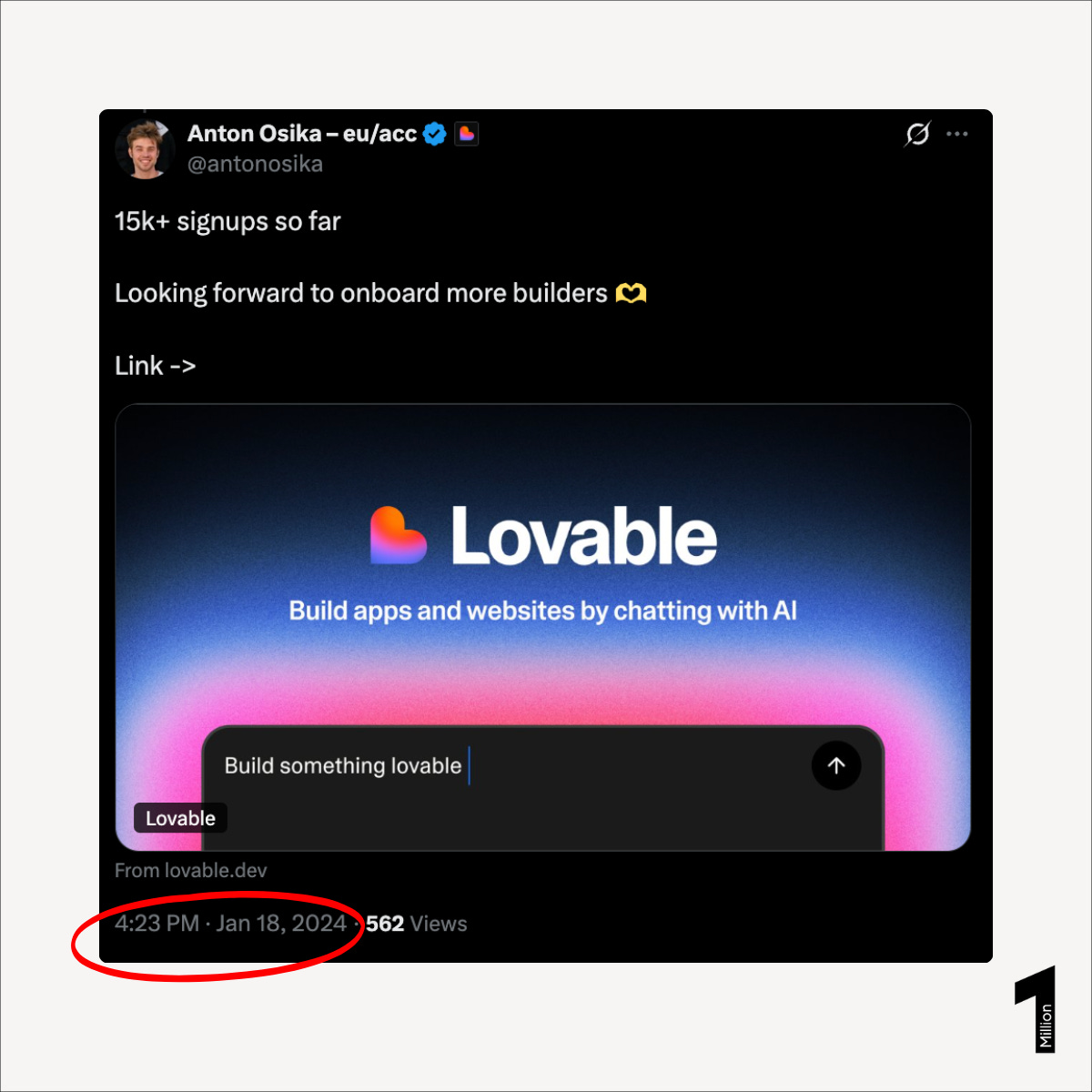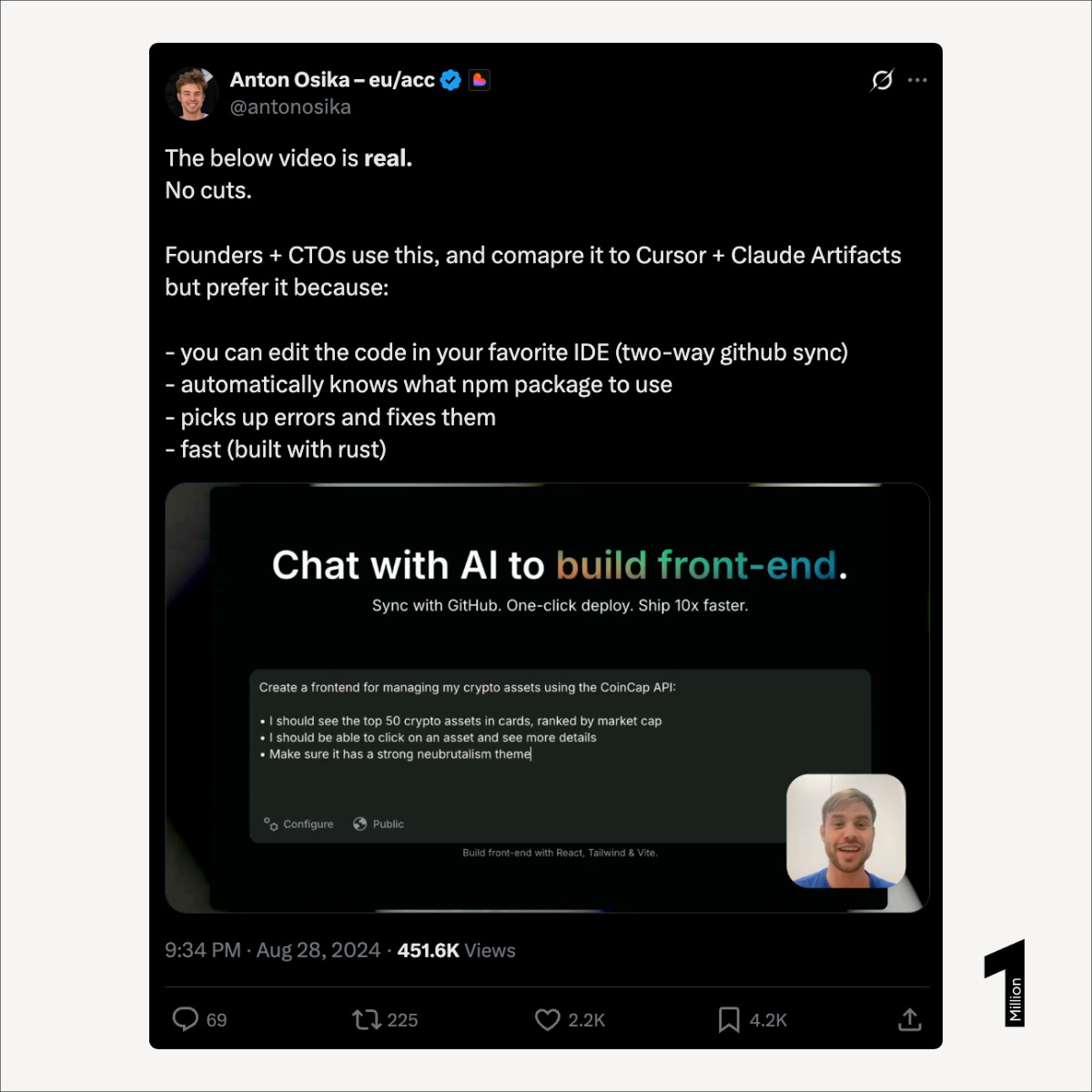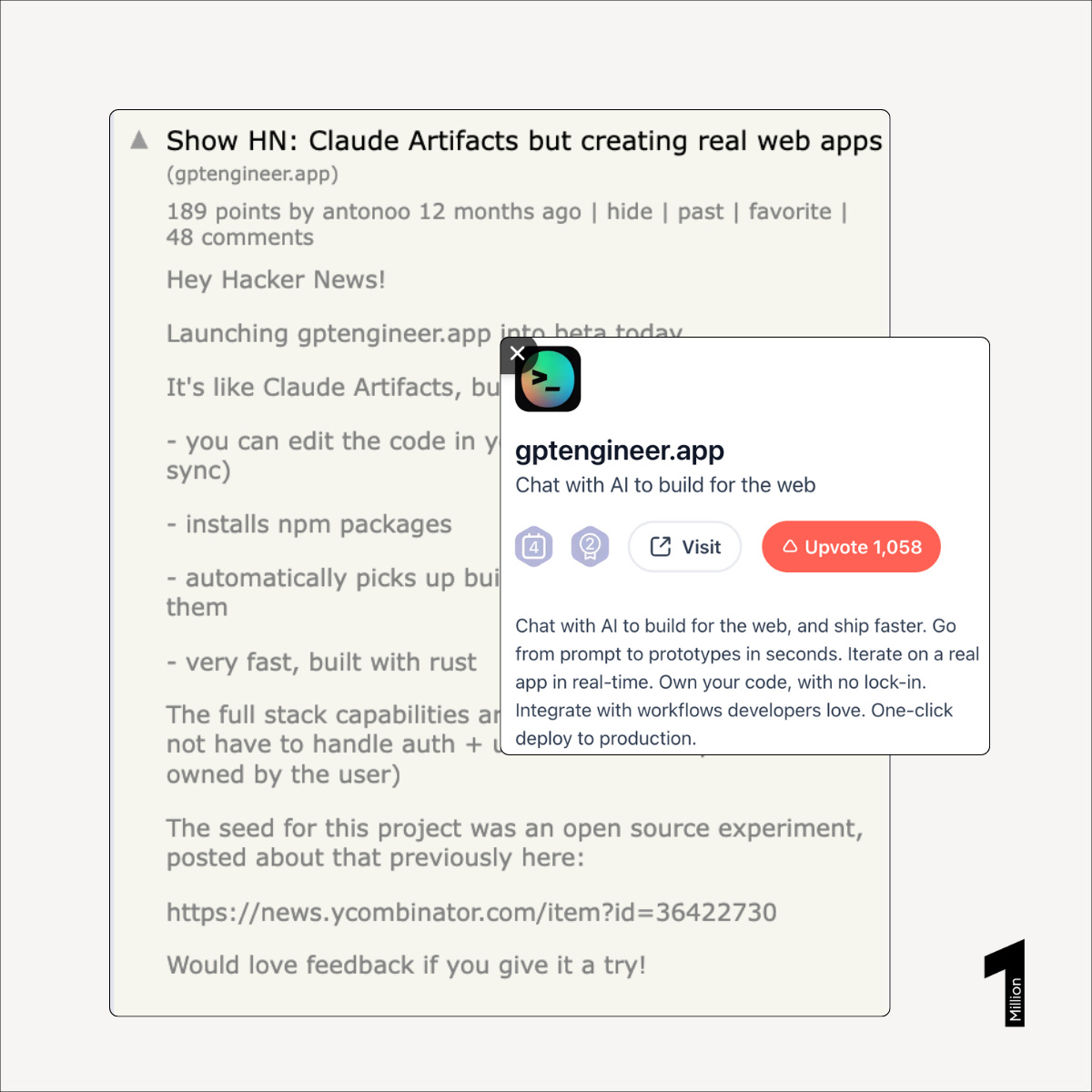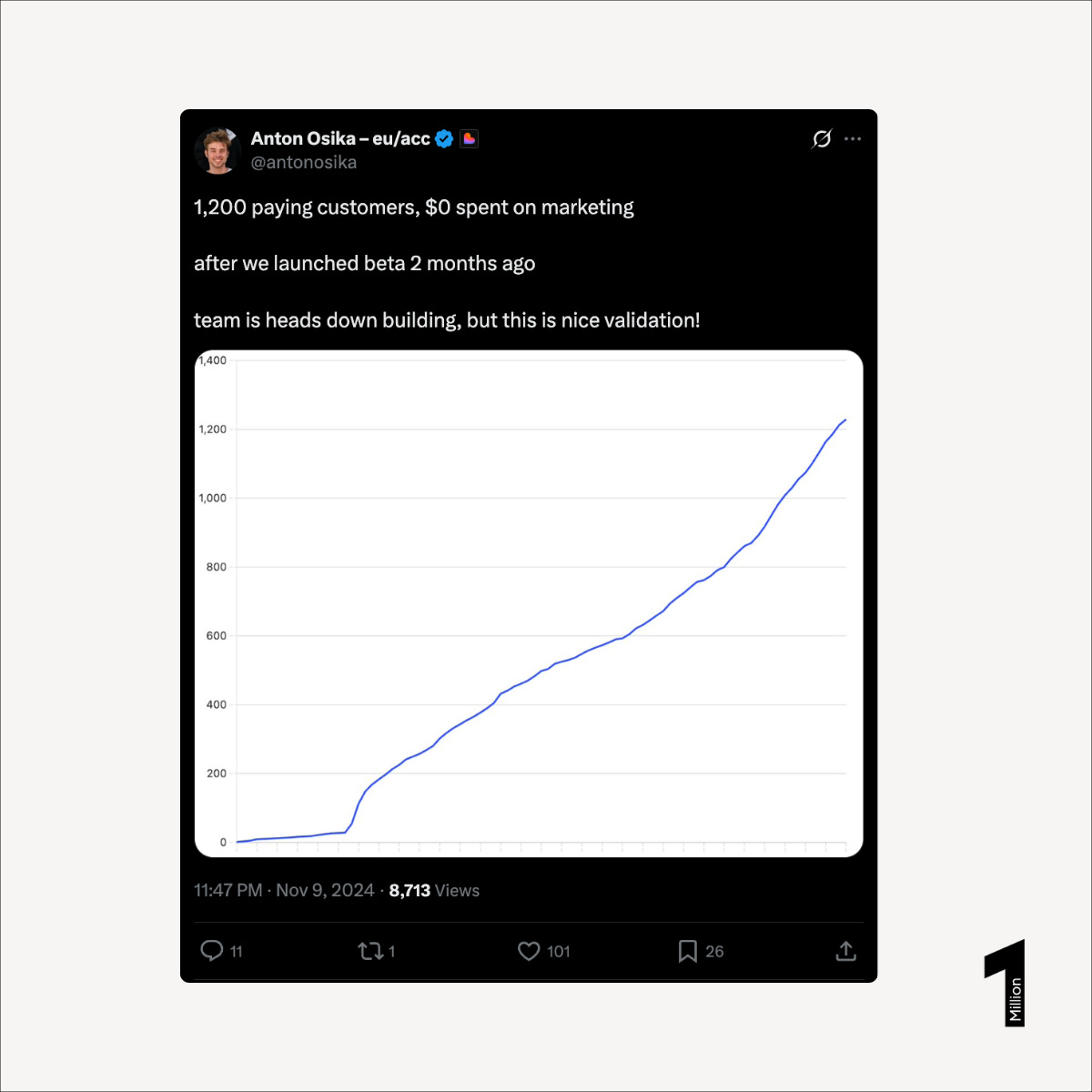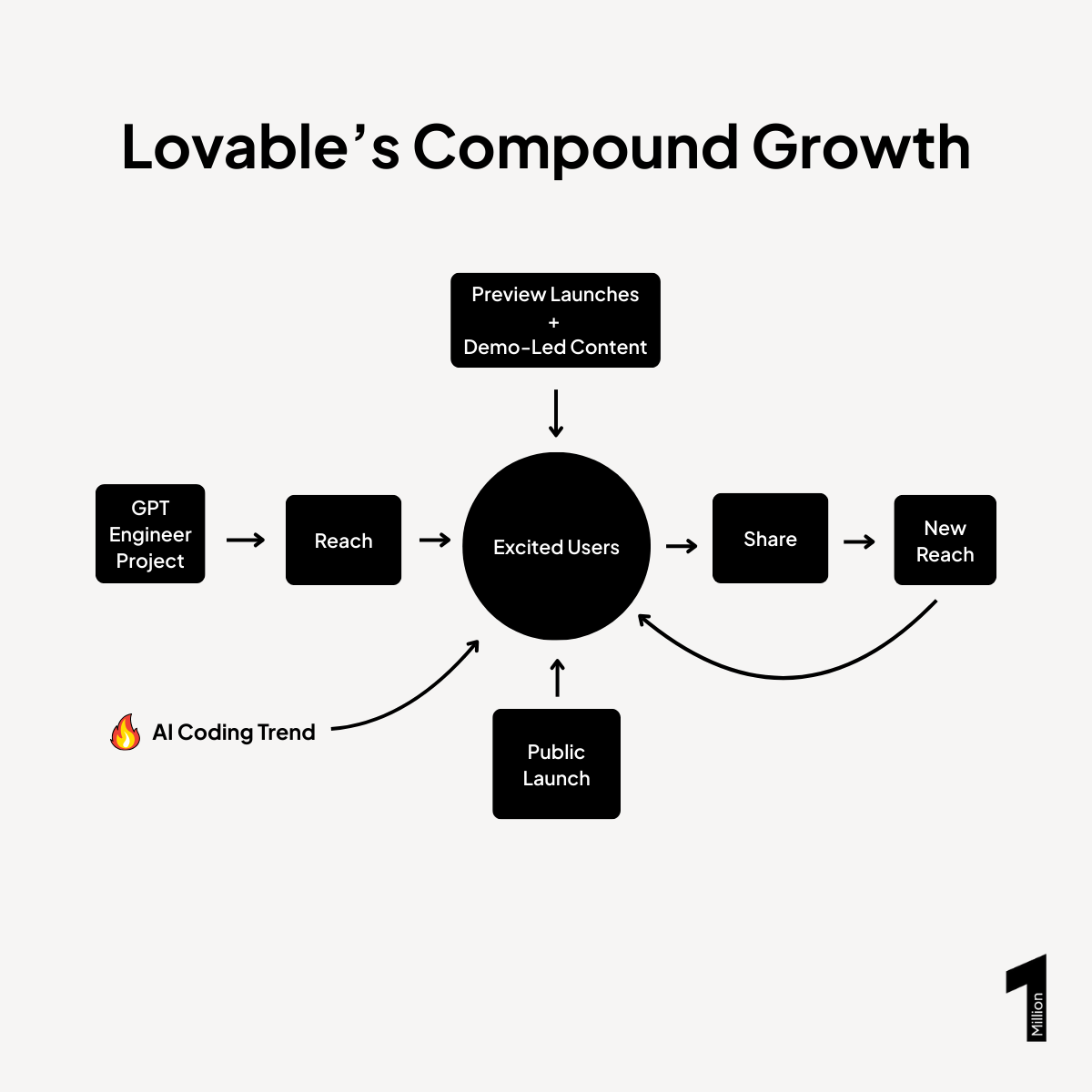$1M Story: Lovable
Why it wasn’t really a week, but 17 months in the making
This week, I’ve covered Lovable, the fastest-growing startup in Europe.
You’ve probably seen the headline: they hit $1M ARR in a week. The truth is, it actually took closer to 17 months.
That’s what I want to unpack. Let’s look at how Lovable built momentum step by step before the explosive launch.
About Lovable
Lovable is a platform that lets you build apps and websites by chatting with AI. It launched publicly in November 2024 after evolving from a viral open-source project, GPT Engineer.
Within a week of its public launch, Lovable hit $1 million ARR with a team of just 15 people.
Today, the company generates over $100 million ARR, making it one of the fastest to reach that milestone, and is valued at $1.5 billion.
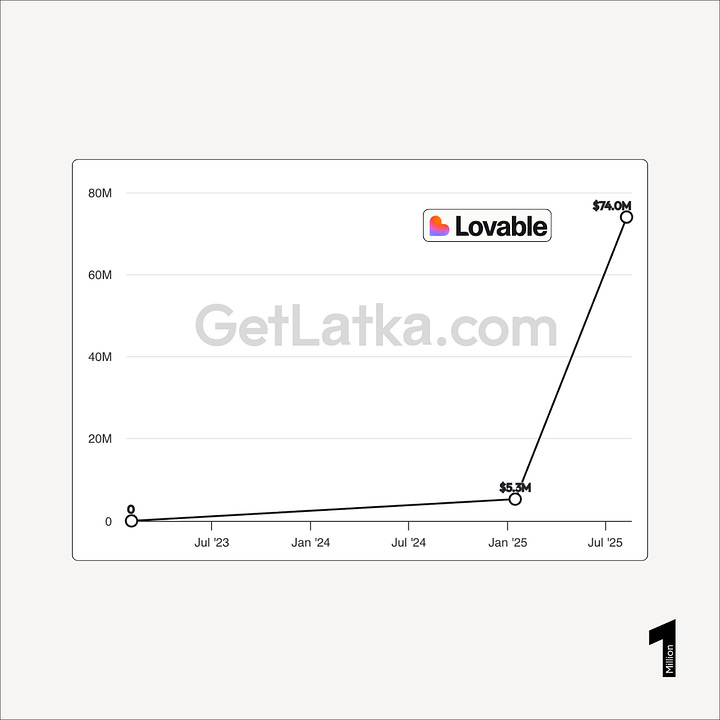
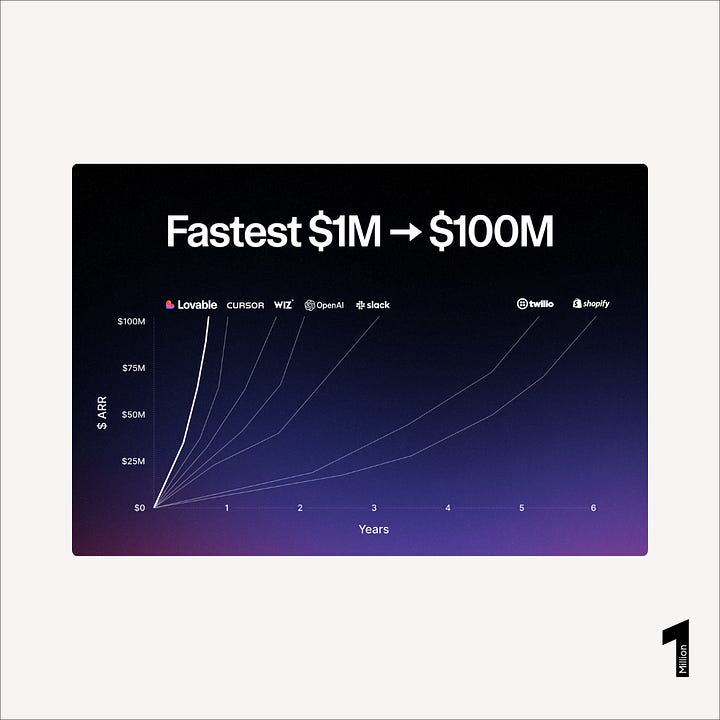
Lovable’s Founding Team
Lovable was founded by Anton Osika and Fabian Hedin in 2023.
Anton Osika (CEO, co-founder): Built GPT Engineer in a weekend to show his teammates the potential of LLMs. His conviction that software creation should be accessible to everyone became the backbone of Lovable.
Fabian Hedin (co-founder): A repeat founder and CTO who joined Anton to turn the open-source project into a scalable product.
The Premise
Validated idea: GPT Engineer, Anton’s open-source project, proved AI could write real code and gave him instant visibility in the GitHub community.
Market timing: AI coding was peaking after ChatGPT’s launch, with hype around new AI coding platforms like Replit, Bolt, Cursor, and Vercel.
Early challenge: Turn the viral project into a reliable product and capture early adopters in a fast-emerging, noisy market.
Lovable’s Marketing Strategy
Unlike other competitors, Lovable’s target persona were non-technical entrepreneurs, and product managers who wanted to turn ideas into working products without hiring engineers.
Their marketing strategy was simple: educate the market and show, not tell, what an AI coding platform could do (create end-to-end apps with prompts) and inspire non-technical users to build applications on their own.
So how did they go about it?
Open-sourced GPT Engineer to validate demand and seed community.
Strategic preview launches to refine the product and sustain buzz.
Shared demo videos that showed value before users even tried the product.
Built in public: sharing updates, and engaging with the X tech community.
Organic word of mouth by AI enthusiasts/evangelists and reviewers
1. Open-Source as the Spark
Anton’s first move was to release GPT Engineer on GitHub, a scrappy open-source project that worked like a teaser for what would later become Lovable. It wasn’t just code; it was proof that AI could actually build apps.
The timing was perfect. After ChatGPT’s launch, the tech community was hungry for examples of AI coding, and GPT Engineer delivered. The launch tweet drew 600,000+ views with more than 550 retweets.
The GitHub repo hit 500 stars in a day, 38,500 stars in a month, and 50K stars in 9 months. As of now, it has more than 54K stars.
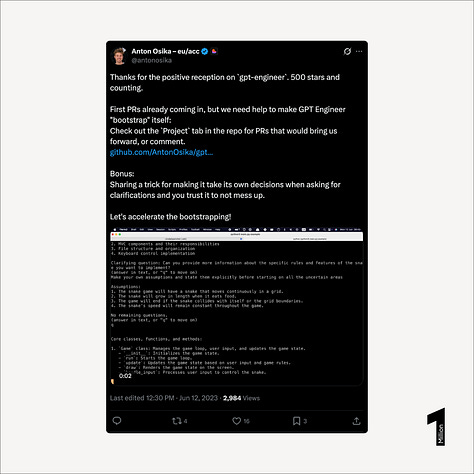
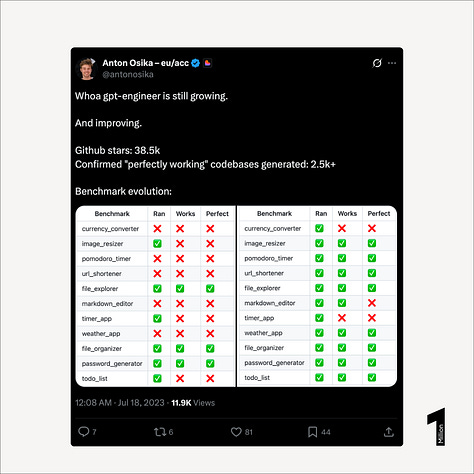
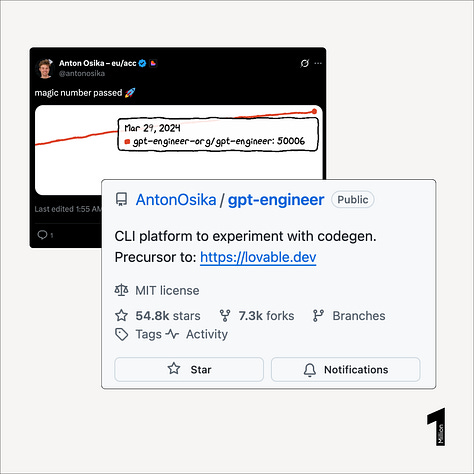
Developers quickly jumped in to try, contribute, and share. The momentum snowballed, giving Anton:
Instant credibility and visibility
An idea validated in the wild
A ready-made developer community
And most importantly, it set the stage for the Lovable app.
2. Strategic Launches
Anton didn’t rely on a single “big bang” launch. Lovable’s path to $1M ARR was built through three deliberate stages, each designed to grow the audience, refine the product, and build anticipation.
Lovable Alpha Launch
The first launch in December 2023 was just a preview, but it created serious traction. They kicked it off on X (Twitter) and followed up on Product Hunt a couple of weeks later.
On Twitter, the launch post exploded with 427,000 views, 240+ retweets, and 1.7K saves.
On Product Hunt, Lovable teamed up with one of the platform’s top hunters and landed #1 Product of the Day and Week with more than 1,325 upvotes.
Even without product access, the alpha launch generated excitement and drove signups. In the first 30 days, more than 15,000 people joined the waitlist.
Lovable Beta Launch
Eight months later, Lovable rolled out its beta on X, Product Hunt, and Hacker News.
The launch tweet pulled in 450,000 views and 6,400+ engagements.
On Product Hunt, it ranked #2 Product of the Day with 1,058 upvotes, while the Hacker News thread gathered 180+ upvotes.
In just two months, Lovable added 50,000+ users and converted more than 1,200 of them as paying customers. For the community that had been waiting since alpha, it felt like finally getting through the door.
Lovable Public Launch
The public launch in November 2024 was the final act, fueled by all the excitement and anticipation built through the earlier launches.
Lovable went live again on Product Hunt, X, and Hacker News. On Product Hunt, it hit #1 Product of the Day. The launch tweet and Hacker News post didn’t match the reach of earlier launches, but the anticipation built from alpha and beta carried it forward.
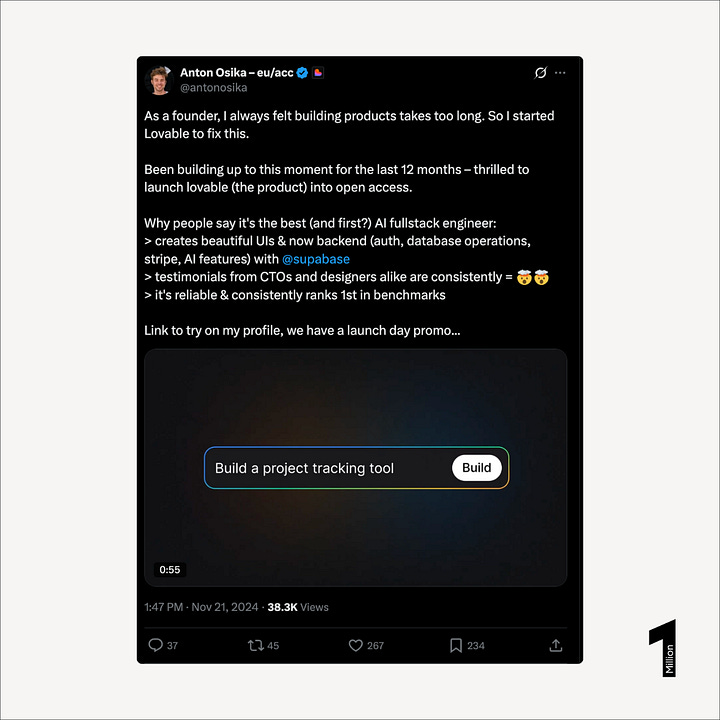
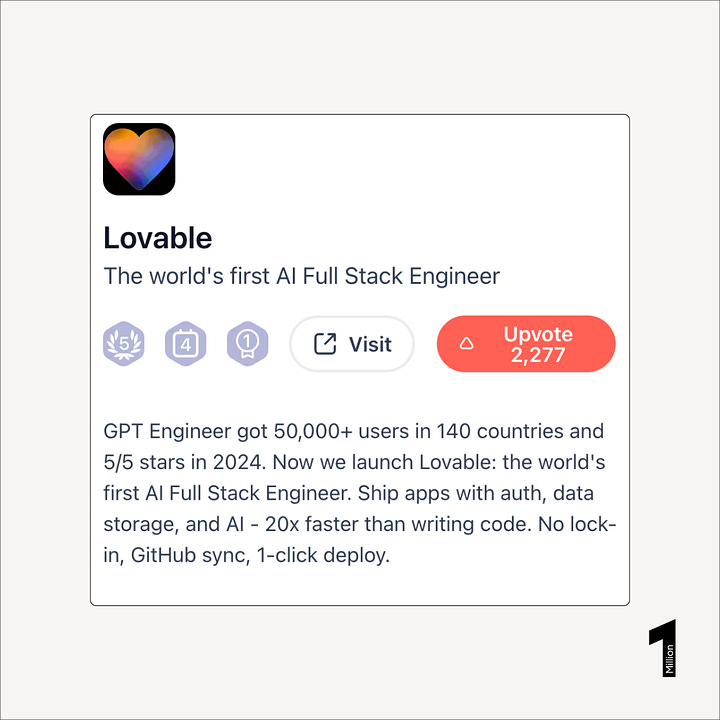
Within a week, Lovable doubled paying customers to more than 3,000 and hit its first $1M ARR in just 8 days.
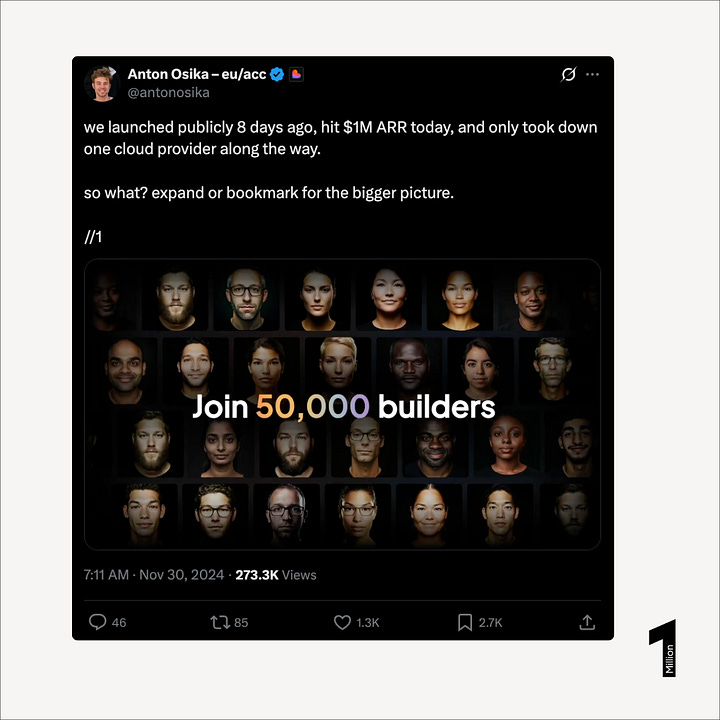
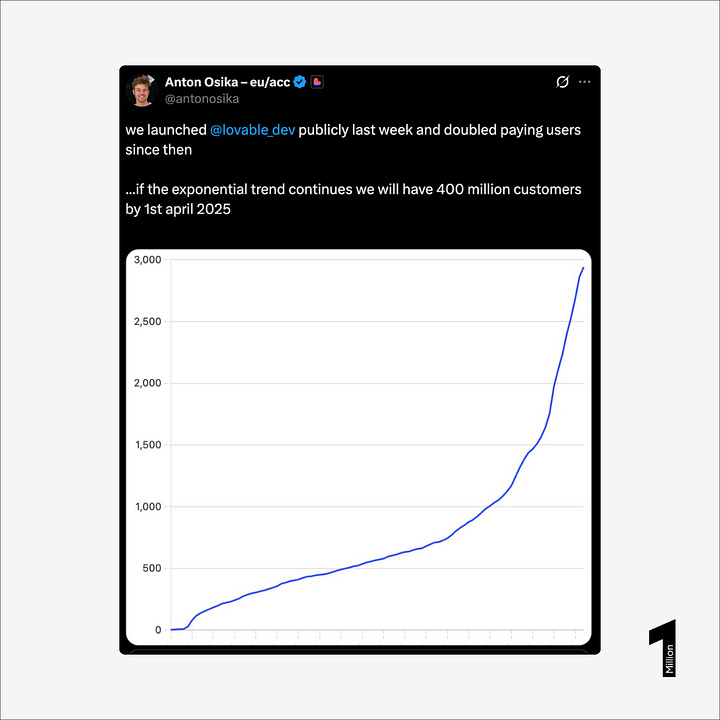
This was the payoff of 17 months of compounding. The alpha built curiosity, the beta showed people were ready to pay, and the public launch opened it up to everyone.
4. Demo-Driven Awareness
Demos became Lovable’s most effective growth content. During the preview and beta phases, Anton shared short videos of micro-apps built from simple prompts on X and other platforms.
It showed the value of Lovable before anyone even touched the product, creating a sense of leverage. For founders and product managers, it looked like a way to launch and validate ideas faster.

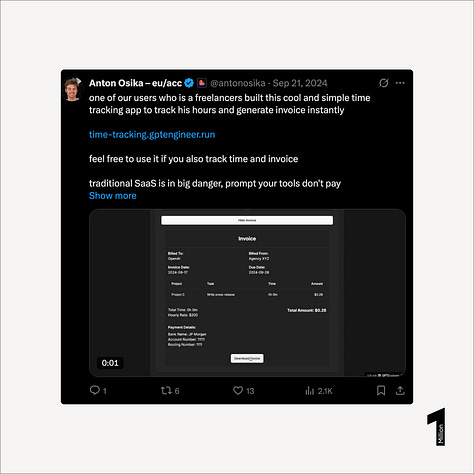
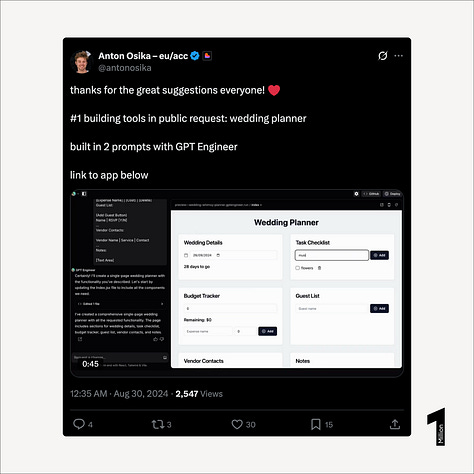
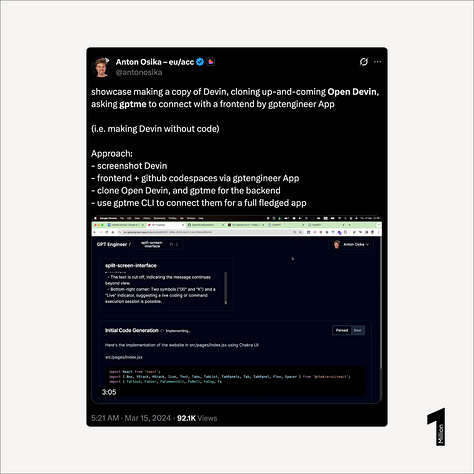
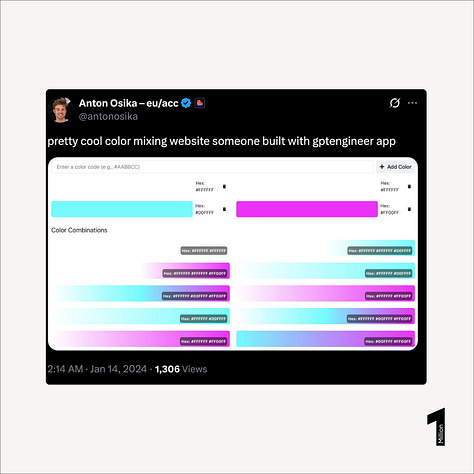
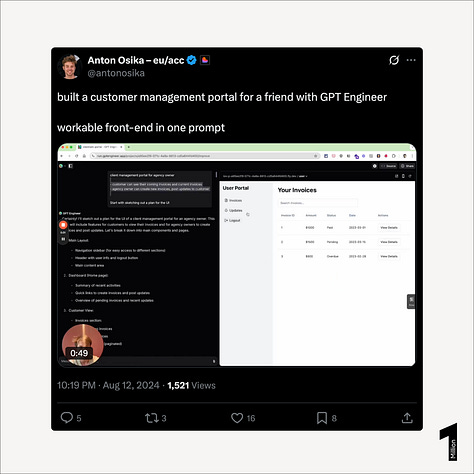
That pre-conceived value, combined with fear of missing out, made people rush in when the public launch opened.
5. Instant Gratification → Fast Conversions
With Lovable, the payoff came right away. You typed an idea and a working prototype appeared in minutes. People weren’t just trying out a tool, they were already building something real.
When they hit the free prompt limit, upgrading felt obvious. Most people would rather keep going and finish what they started than stop and wait for another day.
That simple trigger helped Lovable double its paying customers in a week, from 1,500 to 3,000, and became one of the drivers behind its rapid revenue growth.
Great product + the right friction for free users = rapid revenue growth.
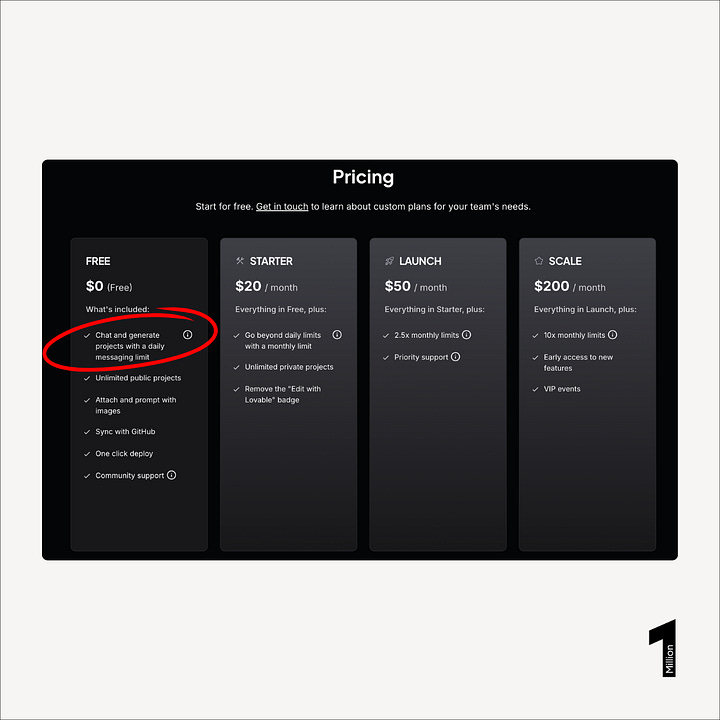
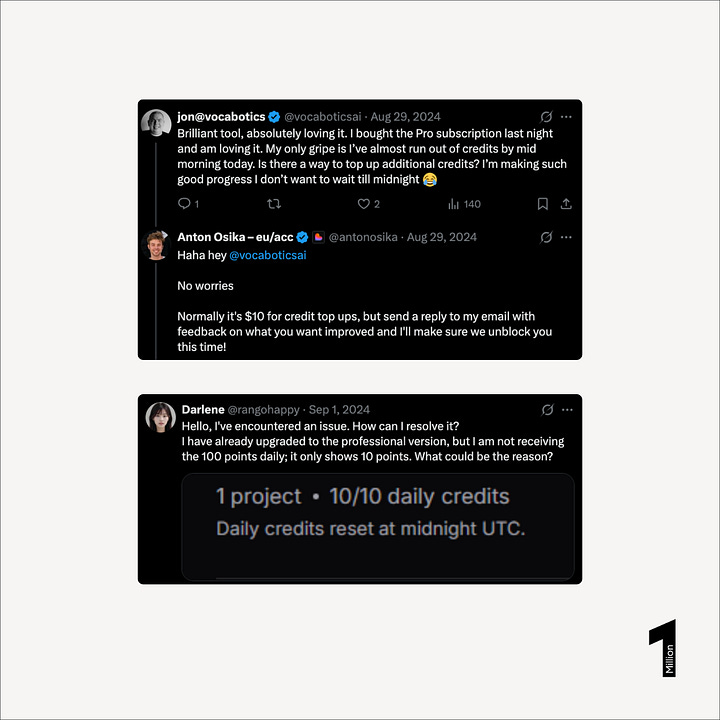
6. Building in Public
Anton built in public from day one. He shared product updates on X, talked often about the future of AI coding, and stayed active in conversations with evangelists and the developer community.
This steady stream of updates did more than show progress. It built trust, kept Lovable in front of the right people, and gave the community a story to rally around.
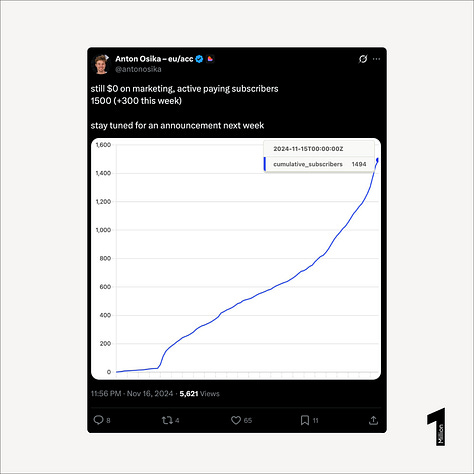
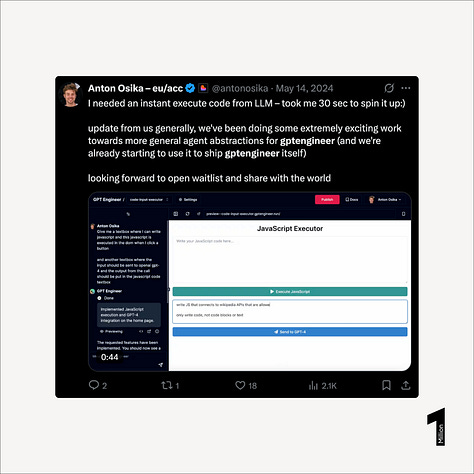
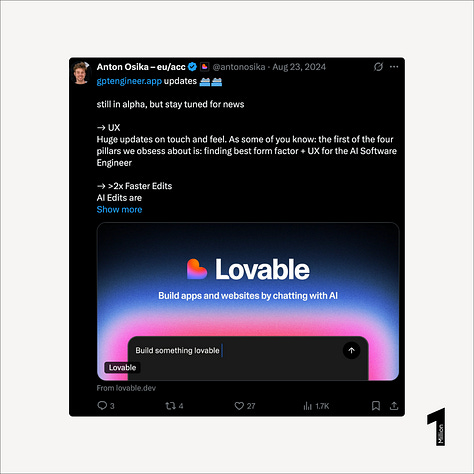
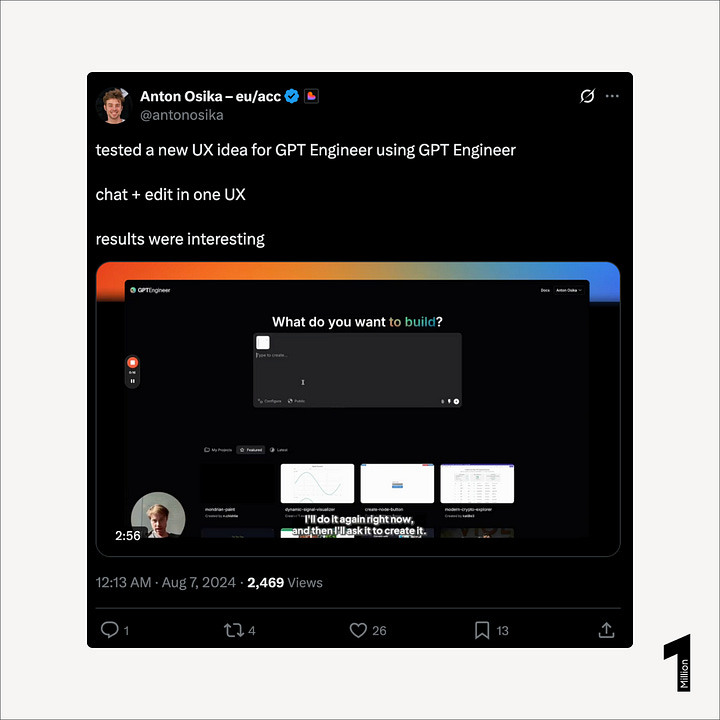
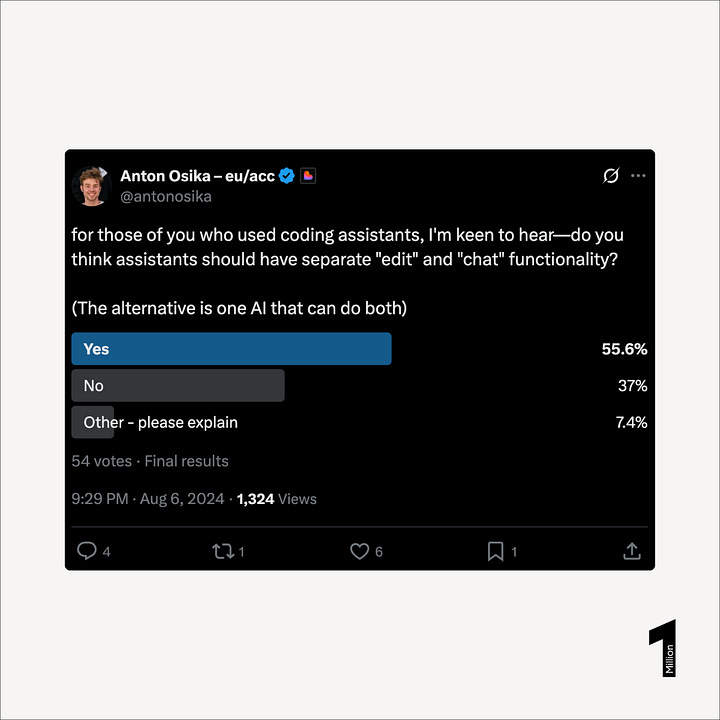
7. Amplified by AI Evangelists and Reviewers
2023–2024 was a golden window for new AI tools. Evangelists on Twitter, YouTube, and blogs were constantly looking for the “next big thing” to test and share.
For them, reviewing new tools wasn’t just curiosity, it was content, a way to engage their audiences and grow followings.
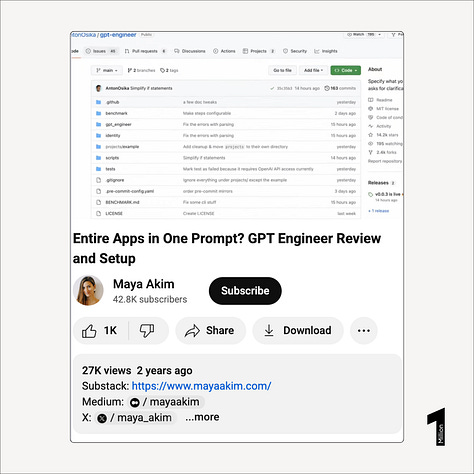
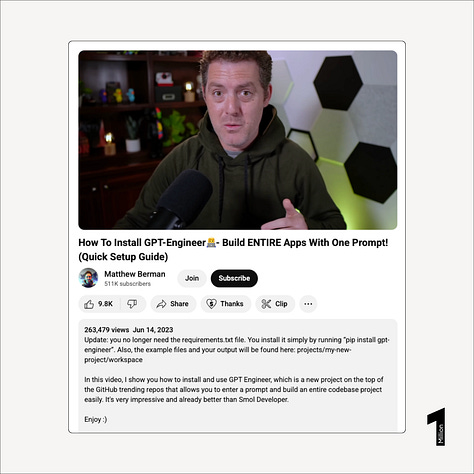
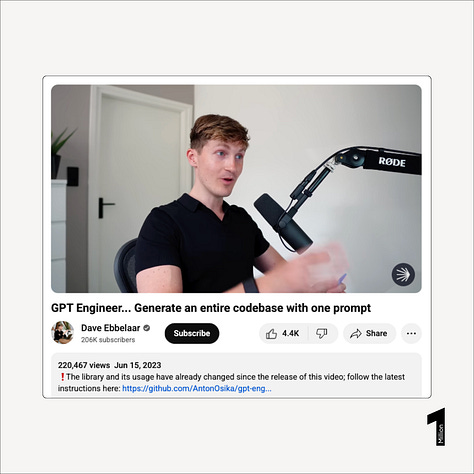
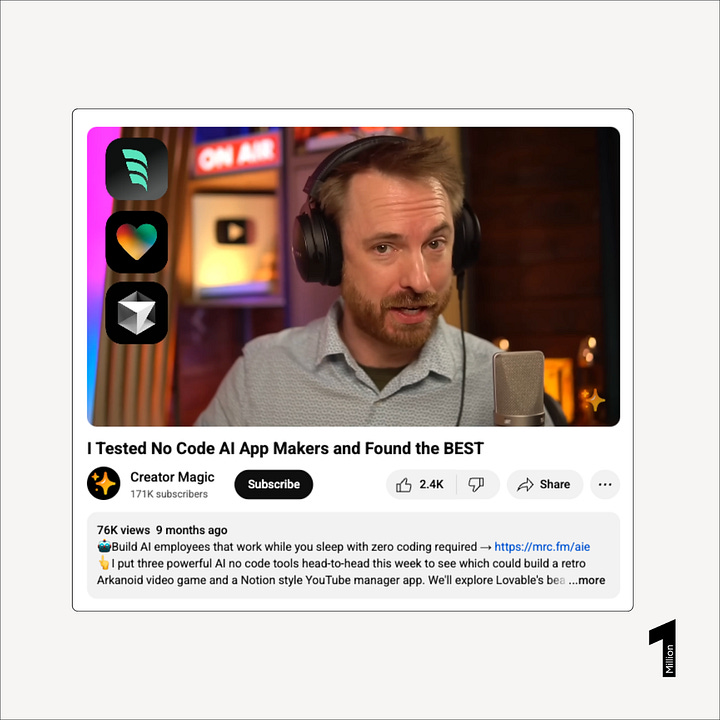
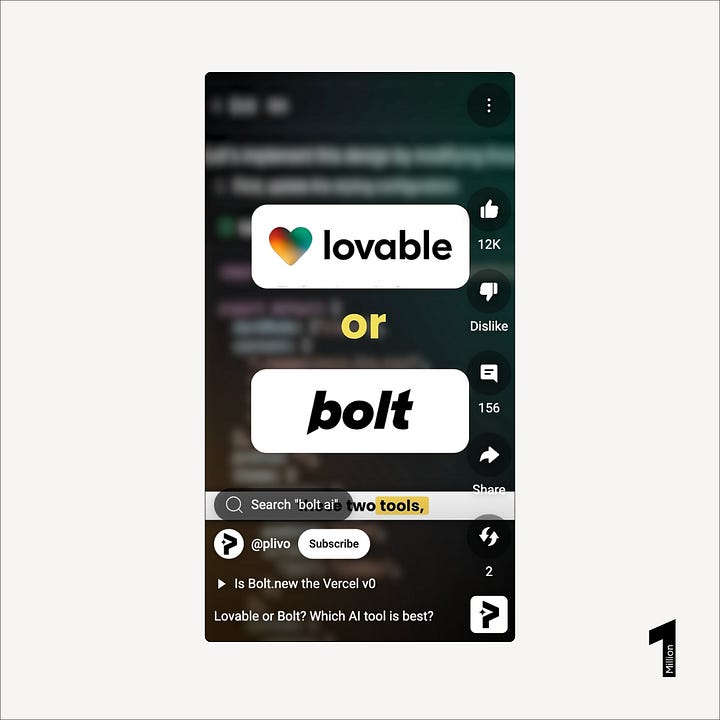
Lovable benefited massively from this dynamic. The GitHub project and staged launches ensured it was always part of the conversation. Anytime someone posted a list of “AI coding tools you should know,” GPT Engineer or Lovable showed up.
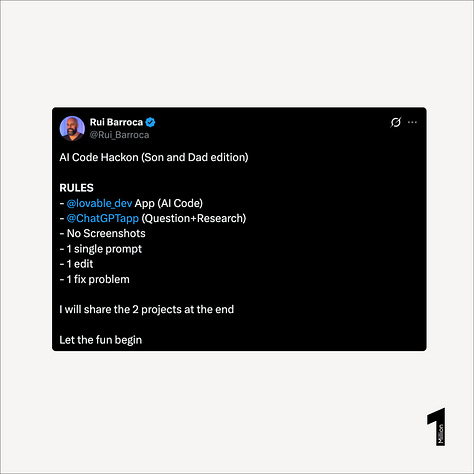
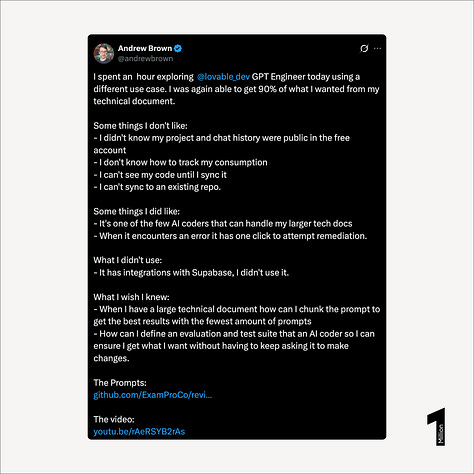
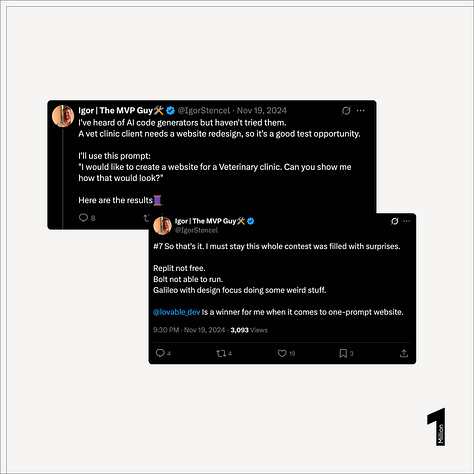
Lovable’s Compound Growth
Lovable’s early growth didn’t come from product shareability but from the novelty of the idea itself. The concept of building full apps through prompts with real-time visual output was new, exciting, and inherently shareable.
Anton and team kept the audience engaged through phased launches and demo-led content that consistently showed progress. Each demo sparked curiosity, spread widely, and pulled in fresh reach. By the time the product was ready, they already had an audience primed and eager to use it.
Key Takeaway
Lovable’s success wasn’t overnight and they didn’t really go from 0 to $1M ARR “in a week.” It was a phased journey built over 17 months.
The growth came from compounding momentum: an open-source project, community buzz, staged launches, and demo-led storytelling. By the time the product was ready, the market was already primed.
For founders, the lesson is clear: what looks like overnight success is usually the result of months of invisible momentum.


